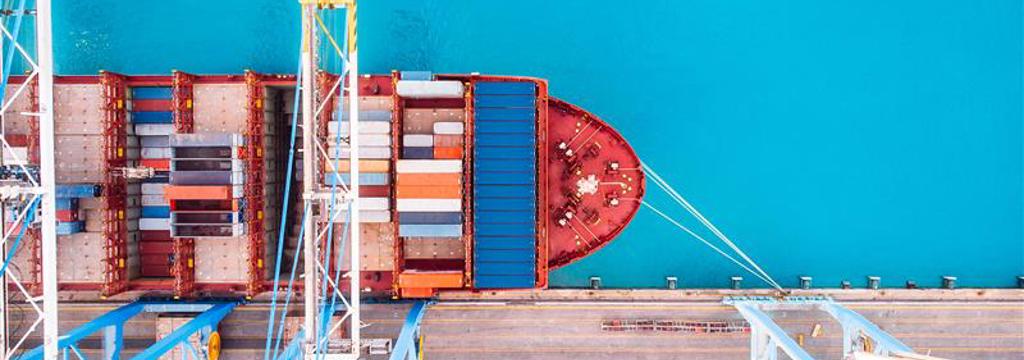Best Practice Control of Work

We would like to share this experience with you in a series of articles with the common goal of keeping our workplaces safe.
Welcome to this series of articles where we examine the Control of Work process in more detail. We will investigate how control of work best practice has informed the way that each of these elements:
- is carried out
- what that means in the real world
- and how we can achieve it
We have been implementing our Control of Work software for over 25 years in a variety of industries. During this time, we have encountered many different types of organisations and many ways of controlling work safely.
From all the companies that we’ve seen implement RAP, we have identified several best practices. We are calling them RAP Insights and we will be highlighting these at various points during the series. They are not intended to give you cause to basically redesign your entire Control of Work processes. Rather they are aimed at highlighting the small changes that can be made; changes that we believe will dramatically improve the efficiency and safety of your processes.
However, even before we start examining the Control of Work processes in detail, it is fair to say that one practice stands out above all others in all Control of Work elements. That is risk assessment.
By this, we mean not just the one-off formal process that we all do – important as it is - but when it is applied across the entire Control of Work process. We are not suggesting that identifying risk as you carry out each of the elements will replace the formal process of risk assessment. Far from it, we see this as a fundamental part of the entire process.
What is true however, is that identifying risks as each element is encountered in the Control of Work workflow, greatly enhances, and augments the entire process leading to much safer results. So therefore, this is our RAP Insights # 1 – ‘always have an eye for risk’
It's not for nothing that RAP stands for the Risk Assessment Process. It is our ethos and our motivation, and we have made this practice the fundamental principle that underpins all the products and services we deliver.
Over the course of these discussion documents, we will see how these RAP Insights reinforce our central tenets and greatly enhance your performance.
The following article concerns the importance of correctly planning. We consider this as the first step of Control of Work, and it could be said that this is the most important. Decisions taken here will cascade down into the rest of the process and influence later controls.
The other articles in the series are Risk Assessment, Establishing Controls, Preparation, Issue of Safety Documentation (the Permit to Work), Carrying out the Work and Completion (including status communication and reporting). The final piece will be on the one thing that underpins all of these – People
Planning for Safety
The Control of Work may typically start with the planning process, or at least the recognition that a piece of work needs to be done. There are many tools available for planning and scheduling the work.
These, quite rightly concern themselves with the logistics of ensuring that:
- the equipment can be worked on
- the materials required for repair are available
- that there is sufficient resource available to do it
This article is concerned with how we might build on that plan to identify potential risks well up front, so that suitable adjustment may conduct risk management mitigation against or even remove them.
There are several elements that the planner can consider up-front, which can greatly improve the chances of accident-free maintenance work being carried out later. Most of these are common sense, but are worth highlighting insofar as taken collectively, they can impart a good sense of what an ideal workplace/environment should look like and the level of risk.
Timing
Timing is important for several reasons. Not just in avoiding conflicting work and not just for economic reasons.
The planner should always try and ensure that the work is conducted in as quick and efficient manner as possible. The longer a job takes, the more people working in the area are exposed to potentially unsafe circumstances and the more potential there is for something to go wrong. The use of timers on the work certificates should therefore be considered.
Scope of the Work
It is important to make sure that the scope of work is clear and concise and that it covers all activities and tools to be used as well as the conditions that will pertain. It is also important to breakdown the work into its component parts so that the status of the job execution is always clear. All should be aware of when their role starts and finishes. This not only makes for a safer job but dramatically improves efficiencies as well.
Over stretching the specialists
Another aspect to look at is that of similar types of work taking place at the same time, especially if they are of ‘high hazard’. A frequent example is for work involving entry into a confined space.
In almost all high-hazard industries nowadays, such work would involve the preparation of an emergency rescue plan before the work could commence. This plan would feature the use of special equipment, perhaps including breathing apparatus, and would involve personnel from specialist organisations such as the Fire Department.
It makes good sense therefore not to initiate so much of this type of work at the one time. The overall commitment of these specialists would be overwhelmed if the worst case was to happen, and they were required to perform many rescues at once.
In a similar way, the situation arising as above is true for work involving road closures. Let us suppose that a large mobile crane is being positioned for carrying out a complex lift over working equipment, and that this involves closing a road because the crane is blocking the access.
You would still want to be sure that emergency access is available to the rescue service should things go wrong. In addition, other work should be planned away from the area so that the chances of the emergency access being required was minimised.
Planning turnarounds
In Turnarounds it is entirely possible that some hazards may be intensified (the busy period and the over stretching from before) but others may be diminished (battery limit isolations, gas free etc.). This will be the topic for a separate discussion.
In conclusion
It is well worth establishing that a well-planned job is a great step in the direction of having a safe job. Although you may get away with poor planning for some of the time, you are running greater risks if you don’t plan well. Also, when carrying out your planning, make sure that at least some part of the process is carried out in conjunction with Operations personnel. Make sure all necessary tasks are considered and that important hazards are identified early on.
Linking your RAP digital permit to your planning/scheduling tool will ensure that you anticipate likely hazards before the event. Meaning that you can put in place controls to avoid/mitigate them and that the job progresses smoothly and efficiently.
Related Articles
 What is Digital Permit to Work?
What is Digital Permit to Work?
Permit to Work has historically always been paper-based systems with multiple forms for each task that needs to be performed. However, in the age of d...
 The Preparation and Isolation - Control of Work, Part 1
The Preparation and Isolation - Control of Work, Part 1
Adequate risk assessment preparation for maintenance work is probably the single most effective way of reducing risks present in both the equipment an...
 The Preparation and Isolation - Control of Work Part 2
The Preparation and Isolation - Control of Work Part 2
High Risk Isolations Some isolation activities are essentially by their nature, extremely high risk. These generally fall into two major areas: Isolat...